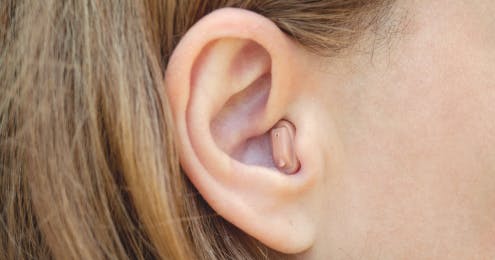Hearing Care Resources
If you're interested in learning more about hearing health, hearing loss, and hearing aid devices, you're in the right place. You'll find valuable resources and information to help you in your hearing health journey.
Resources for Your Hearing Health Journey
The following short articles on a variety of topics will help you to learn more about hearing, hearing care, and what you can do to support yourself and others experiencing hearing loss or impairment.

HOW HEARING HEALTH IS ESSENTIAL TO TOTAL HEALTH
Loss of hearing can happen at any age. Hearing Health is vital to your overall health and wellbeing.
READ ARTICLE →
RISK FACTORS AFFECTING YOUR HEARING HEALTH
Are you at a higher risk to experience hearing loss? Things that may increase your risk of hearing loss.
READ ARTICLE →FIVE LEVELS OF HEARING LOSS
Maybe you've noticed you're missing sounds or misunderstanding more often. Maybe you're just curious about what hearing loss might be like.
READ ARTICLE →
TIPS FOR THOSE WITH HEARING LOSS AND LOVED ONES TO IMPROVE COMMUNICATIONS
Learn easy ways to communicate more effectively.
READ ARTICLE →
COMMON MYTHS ABOUT HEARING LOSS AND HEARING AID DEVICES
Dispelling the common misconceptions can lead more people to hearing health.
READ ARTICLE →Technology and Devices
Essential Level
Designed for the price-conscious consumer, Essential level technology offers features compatible with an easygoing minimally active lifestyle.
Classic Level
Designed for a lightly active lifestyle. Classic technology is great for persons who are not subject to extreme noise and prefer quieter surroundings. Classic hearing aids are perfect for one-on-one conversations and activities where noise does not dominate the environment.
Advanced Level
Designed for an active lifestyle. Advanced Level hearing aids offer noise reduction and directionality that are great for situations such as restaurants, places of worship and outdoor activities.
Premium Level
Designed for a very active lifestyle. Premium hearing aids offer high levels of noise reduction and directionality. This technology is perfect for the workplace, at parties and other situations with interfering noise that hinders communication.
Flagship Level
Designed for an extremely active lifestyle. Flagship hearing aids offer the highest levels of noise reduction, directionality, and advanced features such as A.I. technology. These hearing aids perform the best in situations such as stadiums, concerts, theaters, and large crowds.

DETAILS
DETAILS
Ready to hear more?
Our team is here to answer any questions and offer more information.

